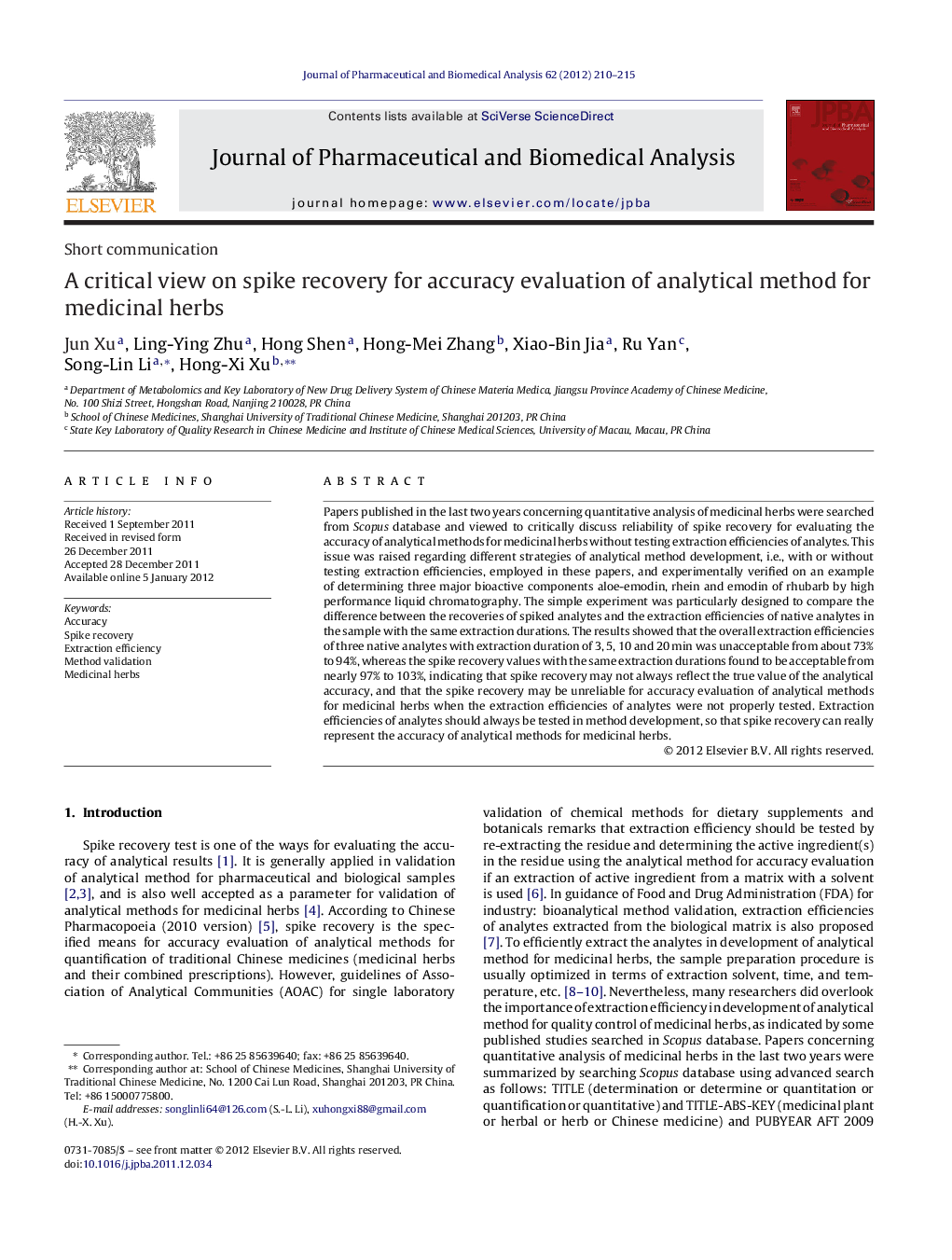| Article ID | Journal | Published Year | Pages | File Type |
|---|---|---|---|---|
| 1221831 | Journal of Pharmaceutical and Biomedical Analysis | 2012 | 6 Pages |
Papers published in the last two years concerning quantitative analysis of medicinal herbs were searched from Scopus database and viewed to critically discuss reliability of spike recovery for evaluating the accuracy of analytical methods for medicinal herbs without testing extraction efficiencies of analytes. This issue was raised regarding different strategies of analytical method development, i.e., with or without testing extraction efficiencies, employed in these papers, and experimentally verified on an example of determining three major bioactive components aloe-emodin, rhein and emodin of rhubarb by high performance liquid chromatography. The simple experiment was particularly designed to compare the difference between the recoveries of spiked analytes and the extraction efficiencies of native analytes in the sample with the same extraction durations. The results showed that the overall extraction efficiencies of three native analytes with extraction duration of 3, 5, 10 and 20 min was unacceptable from about 73% to 94%, whereas the spike recovery values with the same extraction durations found to be acceptable from nearly 97% to 103%, indicating that spike recovery may not always reflect the true value of the analytical accuracy, and that the spike recovery may be unreliable for accuracy evaluation of analytical methods for medicinal herbs when the extraction efficiencies of analytes were not properly tested. Extraction efficiencies of analytes should always be tested in method development, so that spike recovery can really represent the accuracy of analytical methods for medicinal herbs.
